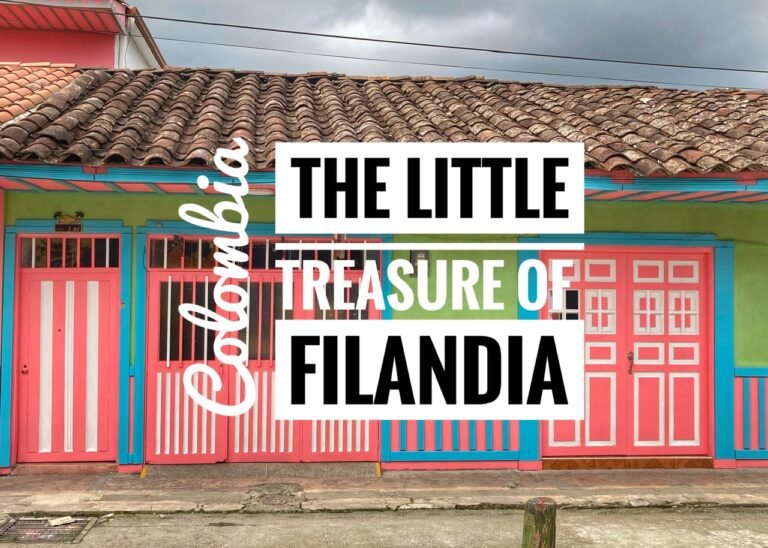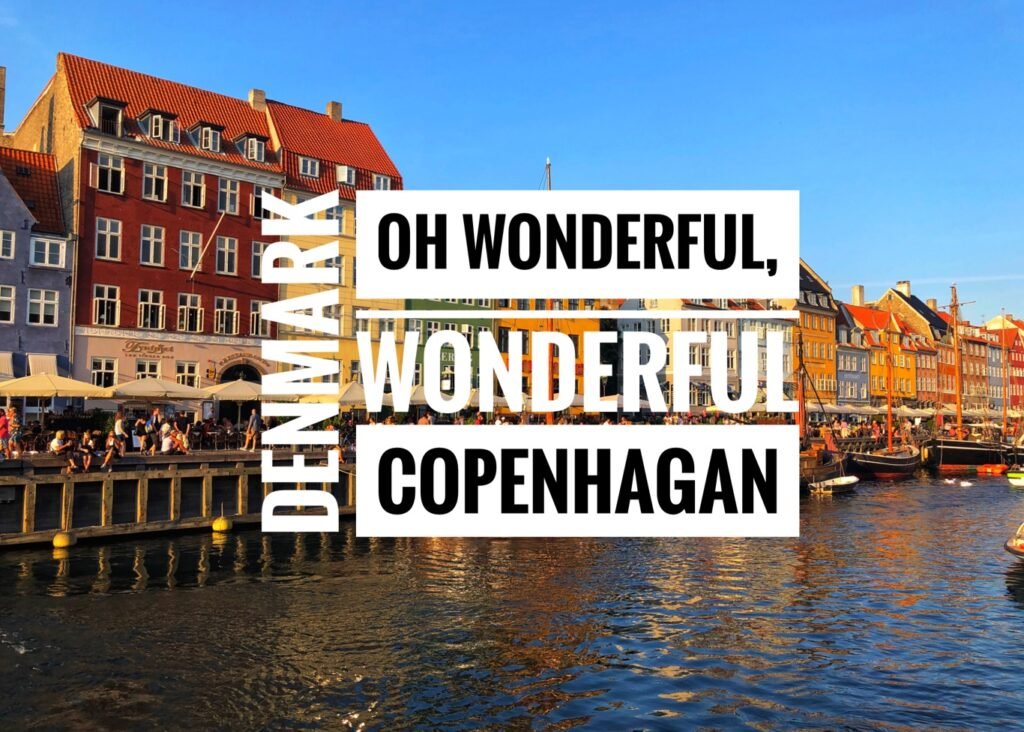
Tales from Hans Christian Anderson have been embedded within us since childhood, so it’s very difficult to not start singing when you think of this spellbinding city. We went to Denmark during July 2018 when we were en route from Sweden to Prague, and because we were sticking with a $50/day for both of us budget, we didn’t last long here, (three nights), but at least we got a spoonful of magic while we were there.
Copenhagen, was originally a fishing village known as “Havn” or “harbor.” The herring was evidently plentiful, but the village was vulnerable to attacks from pirates. Through the years it became a popular merchant’s city and by the 12th Century became known as Køpmannæhafns, which the German translation later shortened to København, or merchant’s harbor.

The Round Tower
One of the first things we wanted to check out was the Round Tower, which is one of the most popular sites in Copenhagen. Tickets sell for a moderately priced 40 DKK a head ($6.50). It was built by Christian IV in the 17th Century as an observation tower, library and planetarium. But the real reason we wanted to check it out?
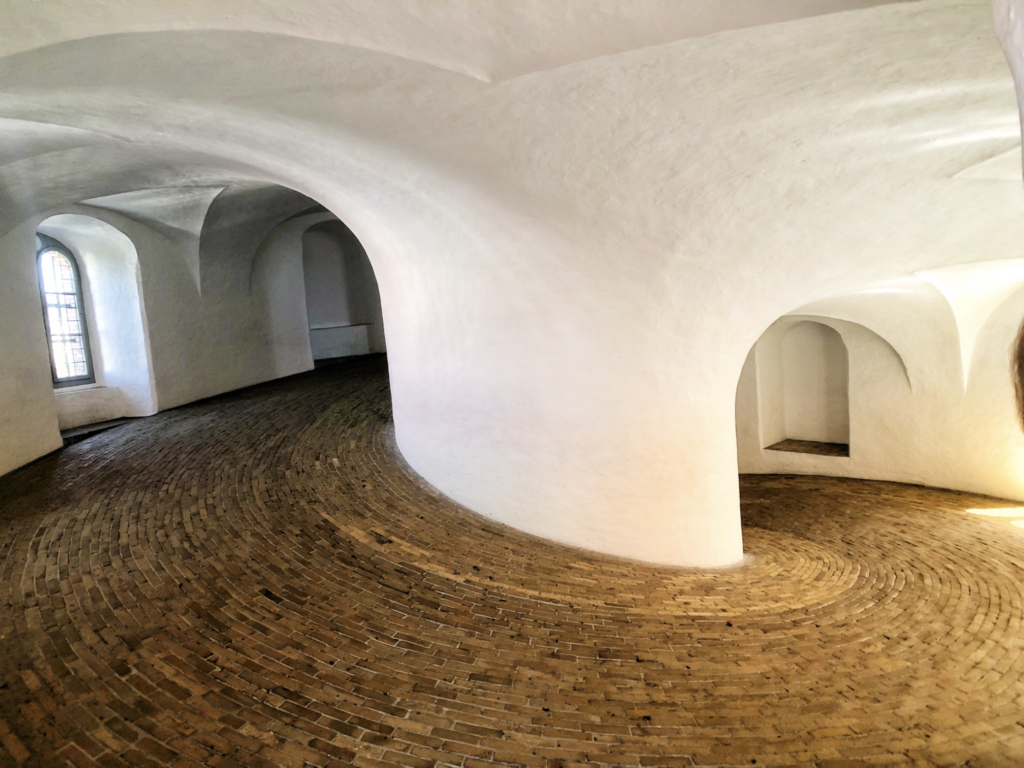
The incredibly unique ramp that slithers its way like a chute to the top floor, instead of an ordinary boring staircase. What marvelous architecture!
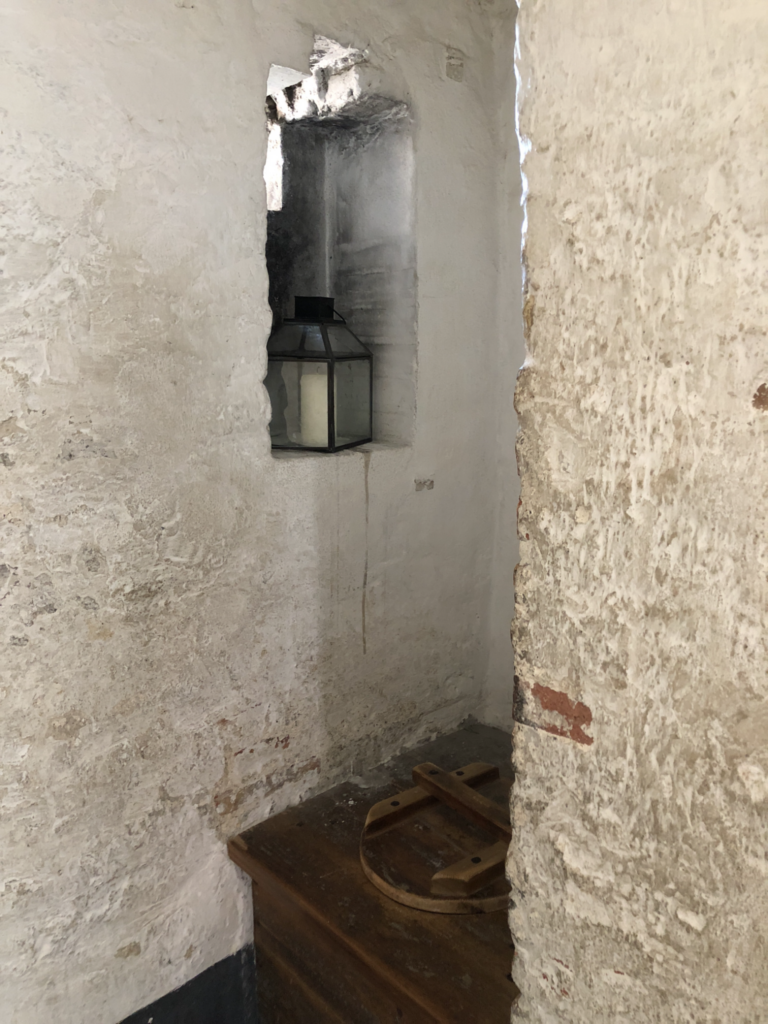
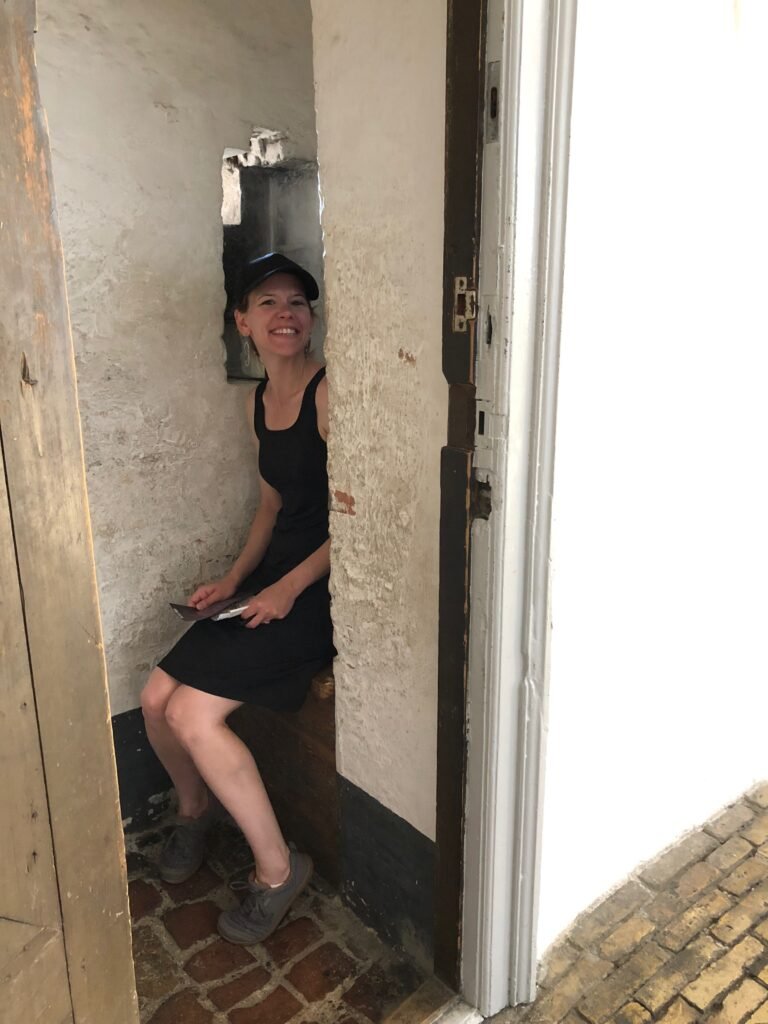
And in case you need a break, there’s a spot for that too. When the Round Tower was completed in 1642, it was equipped with two privies (toilets). the first one was at the top below the observatory and reserved for astronomers. The other one was halfway up next to the University Library and has been restored to its former glory. Tourists are invited to “take a seat” and looked up at the vaulted ceiling which have traces of nicotine penetrating the whitewash. Evidently, it was popular to smoke a pipe while having a visit here. Kinda the historic version of scrolling through Facebook while you crap.
One very famous person who most likely did both here (the pipe and the crap, not the Facebook), was fairy tale writer Hans Christian Andersen because he visited this library often. Wow! This is where he could have conjured up his story of “Thumbelina.” Imagine him thinking of a tiny woman watching him while he pooed.
And just in case anyone is already wondering….YES. It stank. Then, not now, (after all we paid good money to get in here.) But back in the day, through channels in the wall, the presents from both privies were both flooded down to sealed cesspit in the bottom of the tower. Apparently it was so large that at one point, it did not get cleaned for 50-60 years. When it was emptied in 1921, nine loads of decomposed dung were removed. Mmmm.
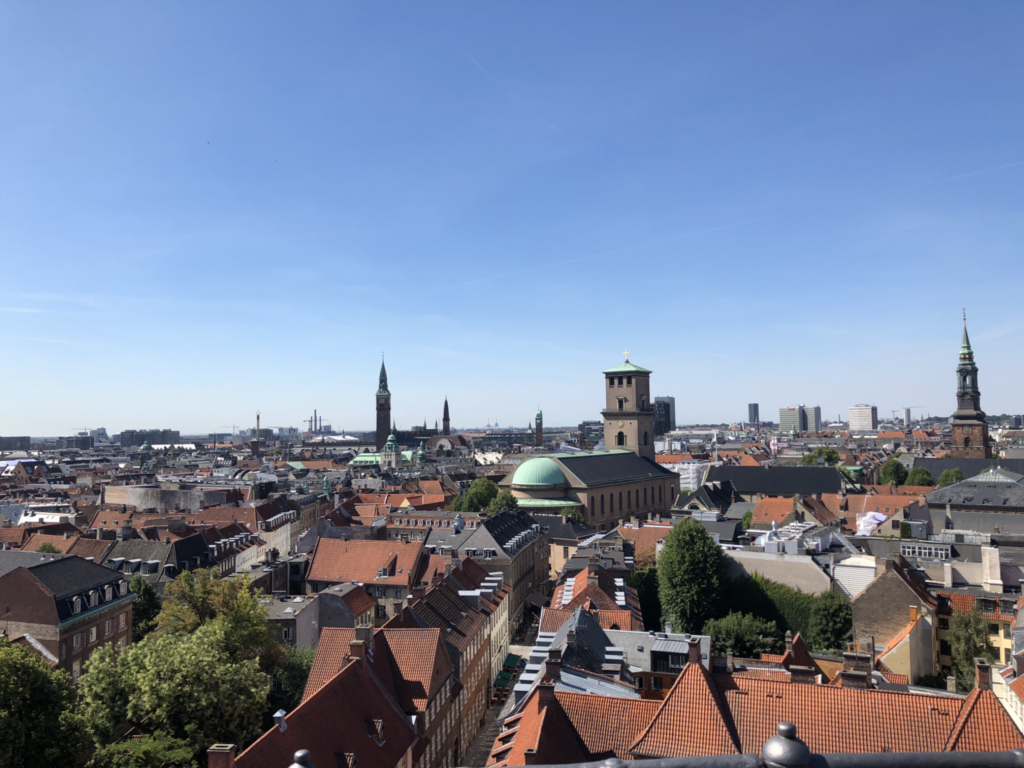
After you’ve scooted your way eight floors to the top, you are rewarded with 360 views of the city, which makes the amble up worth it, in and of itself.

Rosenborg Castle
The 400-year-old Renaissance castle was built by Christian IV whose colourful personality left a strong mark on Danish history. Christian IV loved being in residence at Rosenborg and it quickly became his favourite castle and venue for many important events. It now houses the Danish Crown Jewels in a lovely park setting.

The Little Mermaid
Look at this statue, isn’t it neat? Wouldn’t you think my collection is complete?
Ah yes…meet the most overly touristed and anti-climatic piece of Danish tourism. The bronze 1913 Little Mermaid statue was built by Edvard Eriksen, and was inspired by Hans Christian Andersen. She is perched on a rock by the promenade and her key word is little. She is only 1.25 meters (4.1 feet tall). The sculpture is based on ballerina Ellen Price as a model. However, Ms. Price would not agree to pose nude so the boobs are based on Eriksen’s wife, Eline.
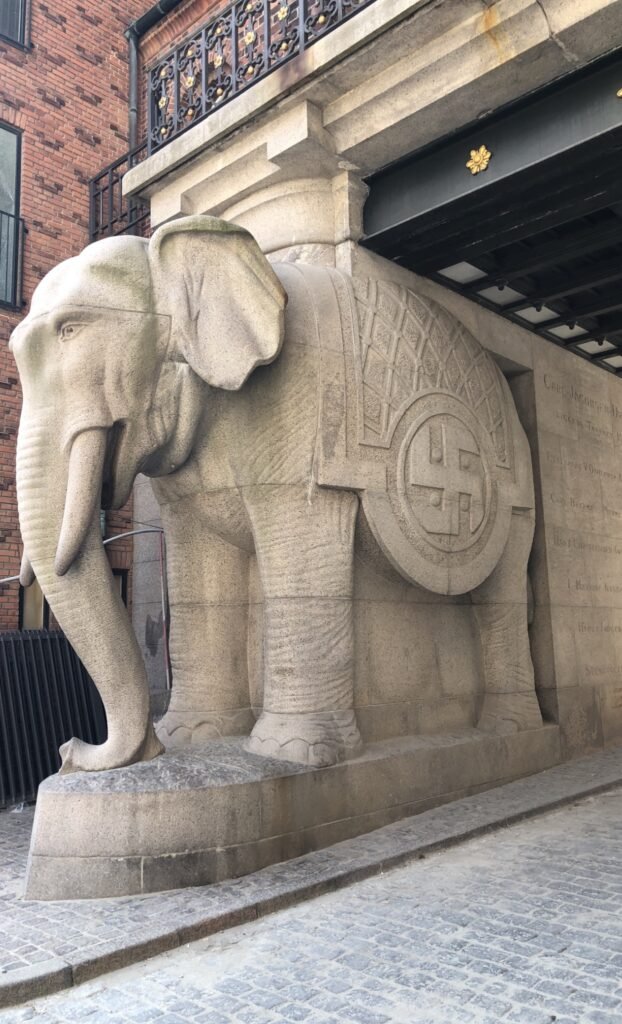
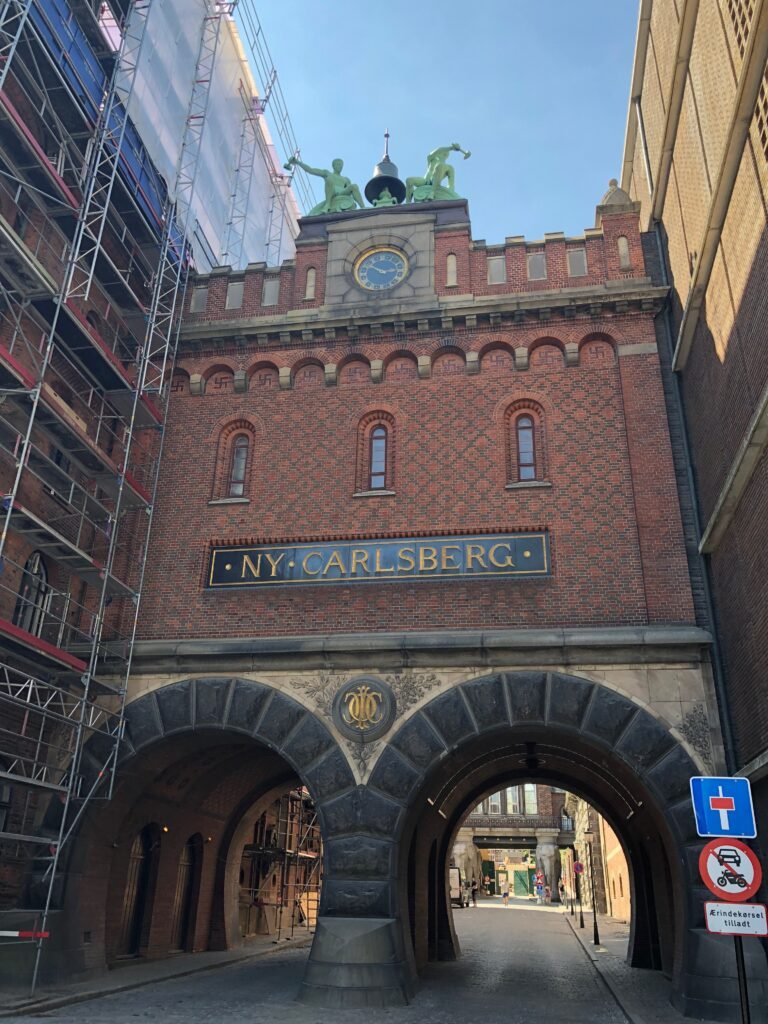
Carlsberg Brewery & The Elephant Gate
The Elephant Gate was built as a water tower for the new Carlsberg Brewhouse in 1901 by the founder’s son, Carl Jacobsen and was dedicated to his four children.
You might notice a glaring swastika on the side of it, which is also delicately embedded with his children’s initials. This ancient symbol ironically originally meant, “That is good” and was the logo of Carlsberg, of course until they were forced to stop using it following World War 2.
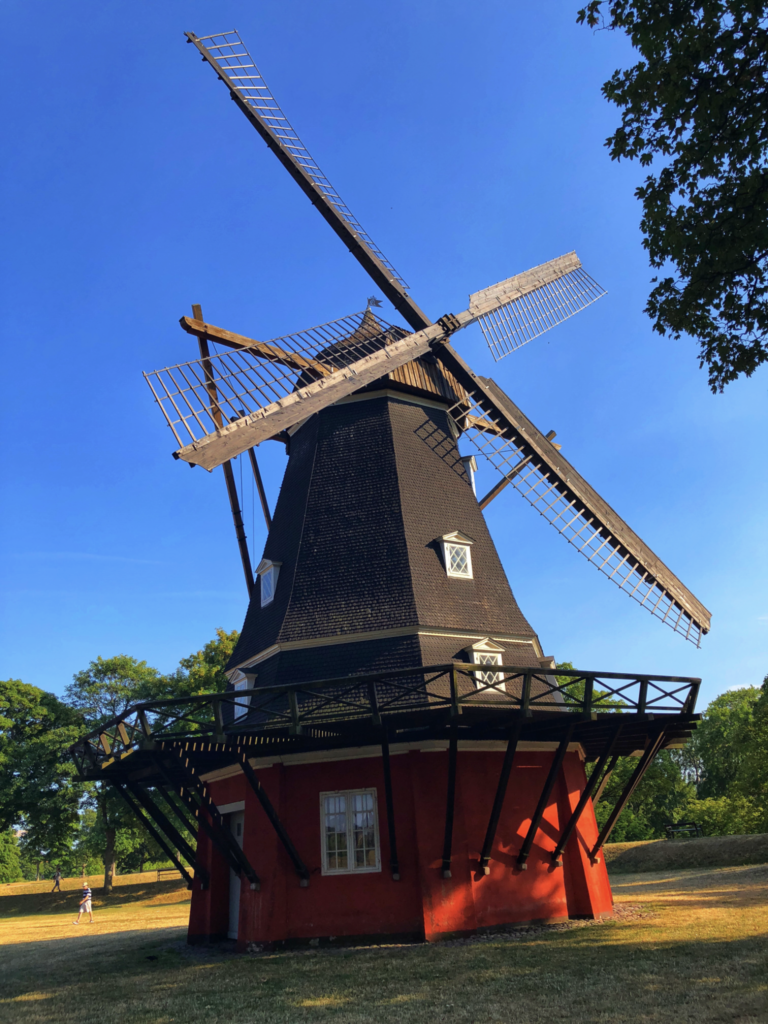
The Kastellet
One of the nicest, and least crowded areas was near the 17th-Century Kastellet fortress. This gorgeous windmill is located within and was one of our favorite parts of Copenhagen. The construction was initiated by King Christian IV. It is best known as Kastellet, “The Citadel”.
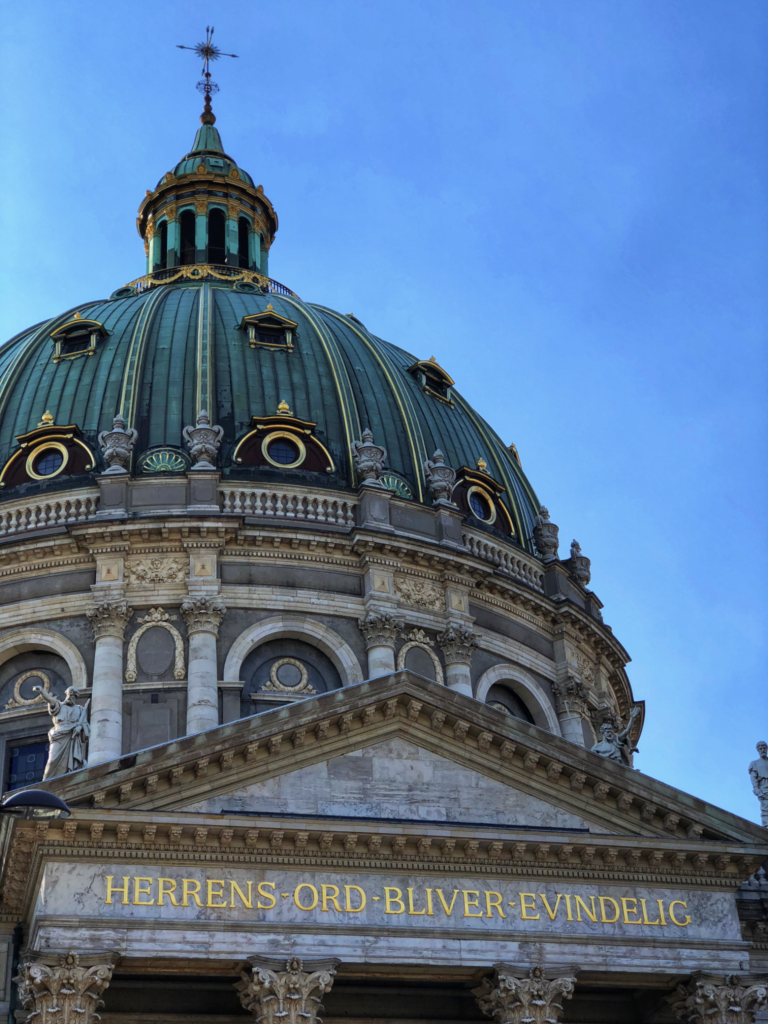
Frederik’s Church
This 18th-Century Lutheran church, popularly known as the Marble Church (Marmorkirken), has the largest dome in Scandinavia and is famous for its rococo architecture.
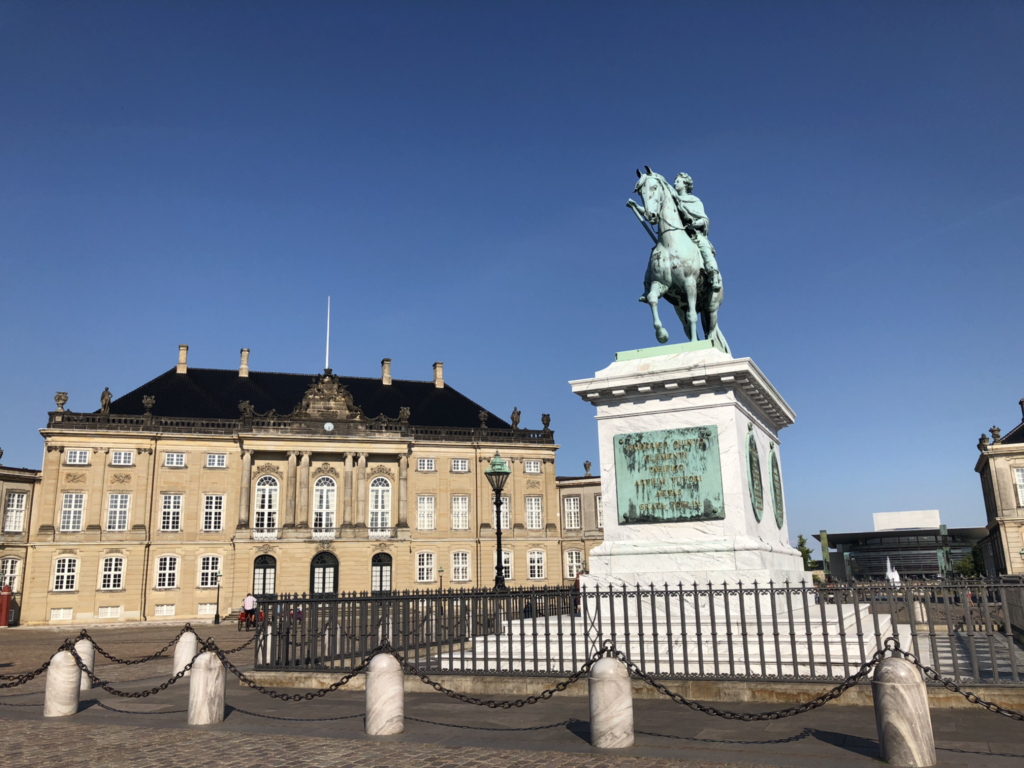
The Amalienborg Palace
Each day at noon, the Danish Royal Guard marches from their barracks in 100 Gothersgade by Rosenborg Castle through the streets of Copenhagen until they end up at Amalienborg Palace, which is where the changing of the guard happens. This palace is the home of the Danish royal family, which is one of the world’s oldest monarchies.
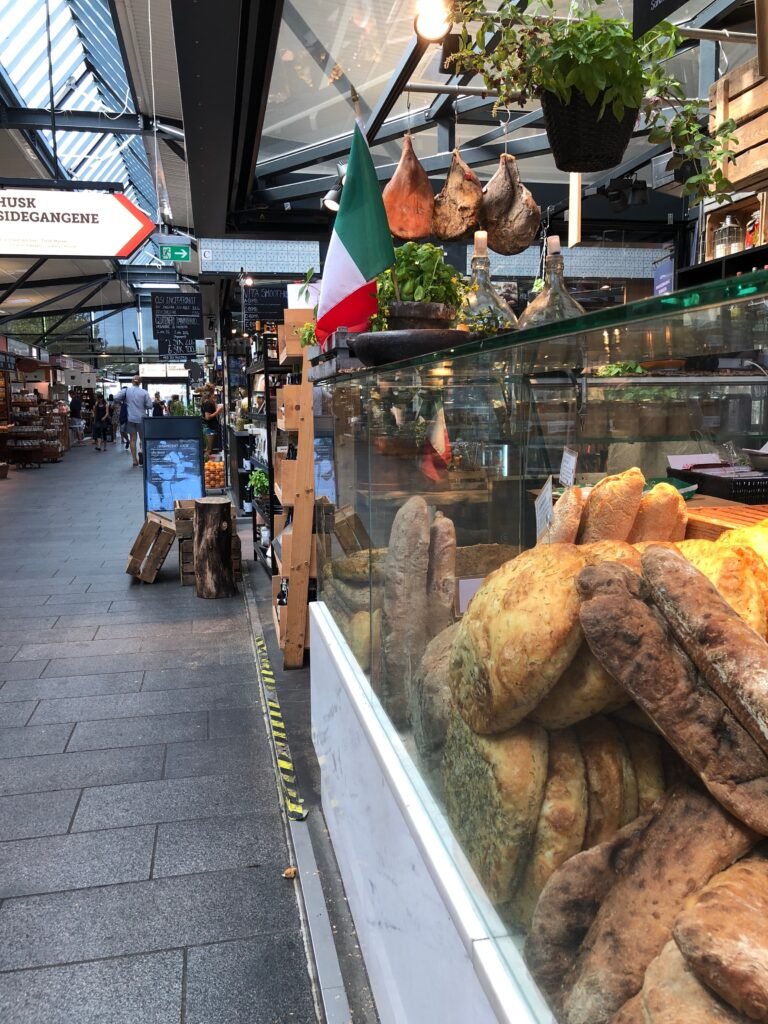
Torvehallerne (Fresh Food Market)
To get a taste of Denmark, we stopped in the Torvelhallerne, an urban covered marketplace featuring stalls with local produce, gourmet goods, beverages and desserts. A must try if you’re in Denmark, but just expect everything to be extra pricey! Needless to say, we only got a pastry because we had our lunch packed in our bags and we were not gonna fall for that…no siren!

Nyhavn
Arguably one of the most iconic street scenes in all of Scandinavia can found in Copenhagen’s 17th-Century waterfront street of Nyhavn. King Christian V built this Nyhavn Canal between 1670-1673 using forced labor from Swedish prisoners of war. Considering they lacked machinery and dump trucks, one can assume that it was dug by hand. Following its development, for three centuries it was a maritime port and was a common hangout for sailors.

There are two sides to the canal, the sunny side and shady side. Interestingly both sides were shady until the 1960’s as it served as a red-light district for the aforementioned sailors. Then some marketing genius decided to “rebrand” in the sixties and it began becoming the tourist goldmine bulging with shops and restaurants that it is today.
Three of these buildings were also home to Hans Christian Andersen during the mid-1800’s. (Seriously that guy got around this city!)
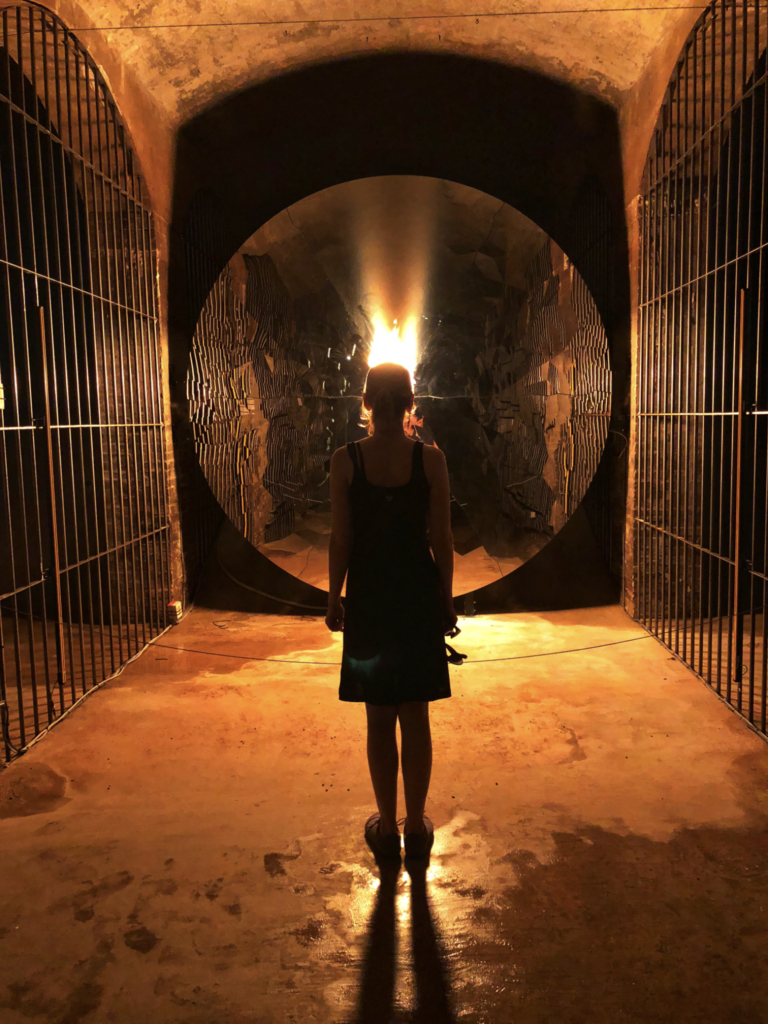
The Cisternerne
The most captivating (and maybe a little creepy) thing we did in Copenhagen was visit the permanent art exhibition in the 19th-century subterranean reservoir under Søndermarken Park (140 DKK or $23 for two tickets). In this exhibit, art becomes one with the physical surroundings in an area that was once filled with 16 million liters of water. It’s now adorned with stalactites and stalagmites and the exhibit contrasts nature to experiment with sound, light and temperature.
We went in July so the chilly 47 degree Fahrenheit (8 celsius) air temperature felt like a welcoming icebox. It was complemented with exhibits like the one above, which is sure to scare the shit out of you the first time you approach it. When you walk up, all you see is the mirrored silver disc tucked amongst two ominous barred walls. And then a blast of inferno shoots out to greet and warm you. It’s bizarre, eerie, and makes you feel like a cut of meat getting flambeed. Once you get used to it, however, it’s hard to stop staring at the hypnotic flame.
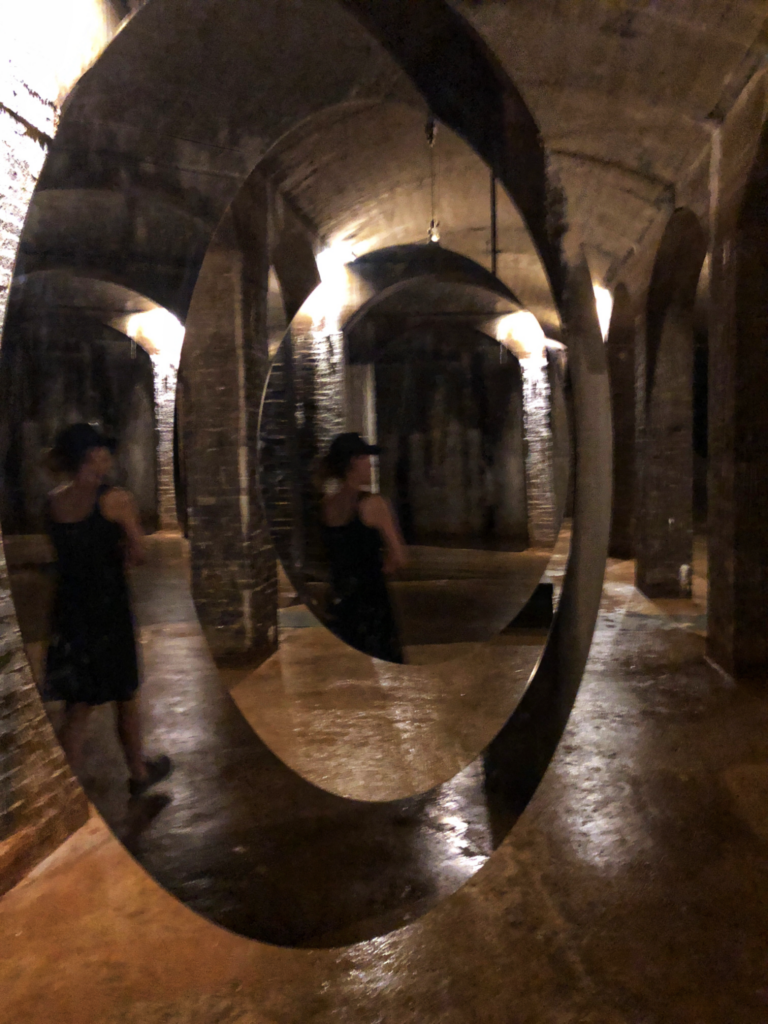
Throughout the cistern, one will find dark and dank tunnels combined with mirrors of all shapes and sizes. They are draped, often spinning, swaying, and swirling, throughout the bleakness to create an even creepier ambience as you wonder what might be hiding in those dark corners of the cavern.
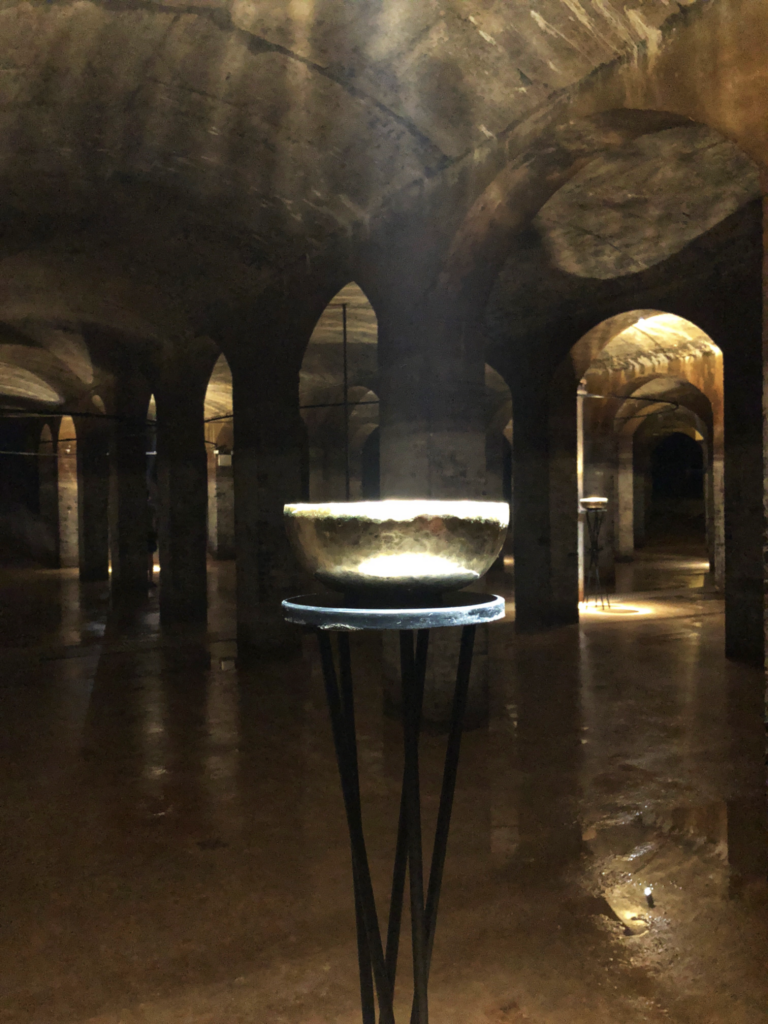
The exhibit also takes advantage of the astounding acoustics of the room to create sound art. This particular room was dotted with tall pillars hoisting up sound bowls, which were struck sporadically by balls, which gracefully danced throughout the room on a ceiling track. It created a meditative experience that was hard to walk away from.

What an indescribable fun house!
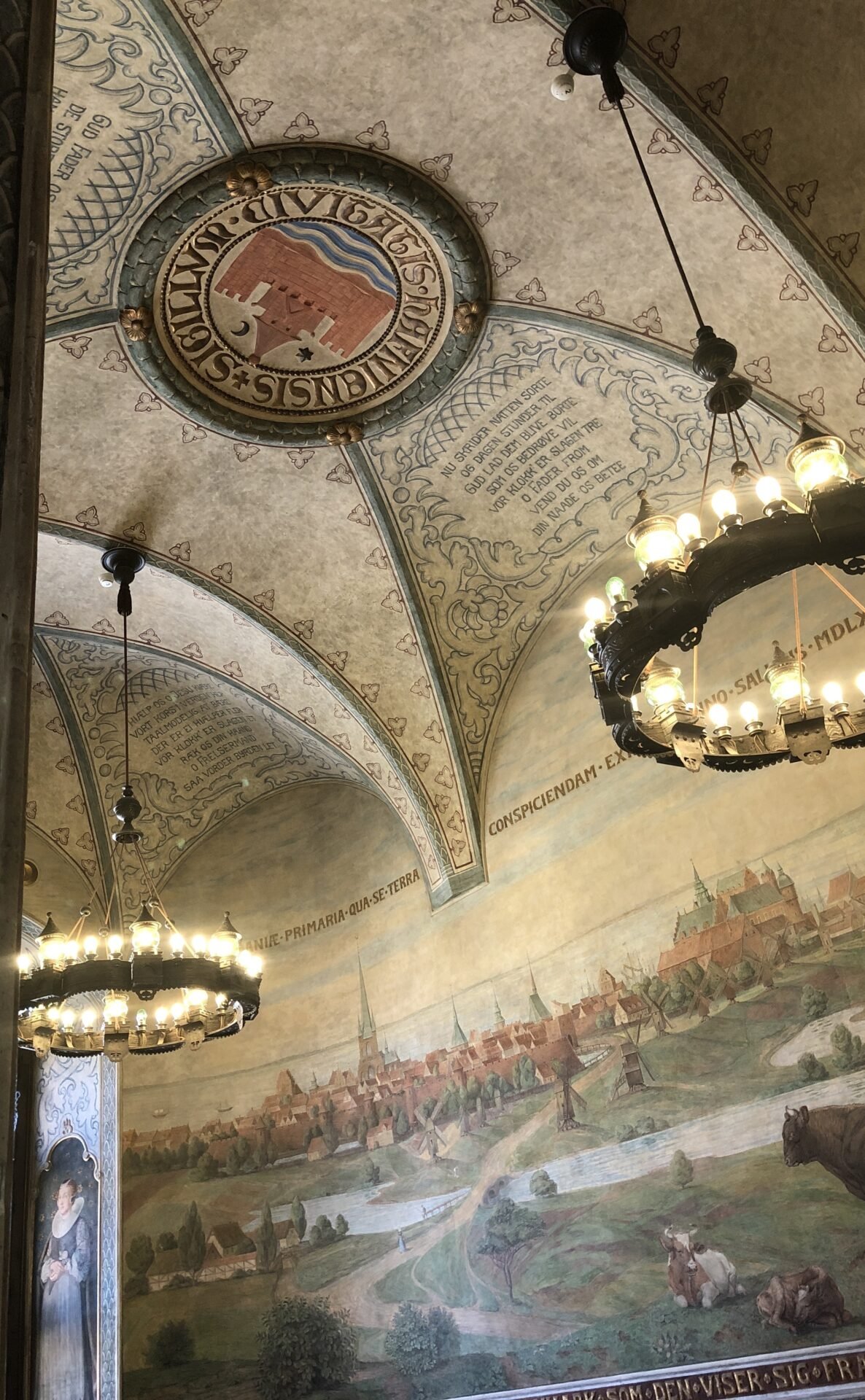
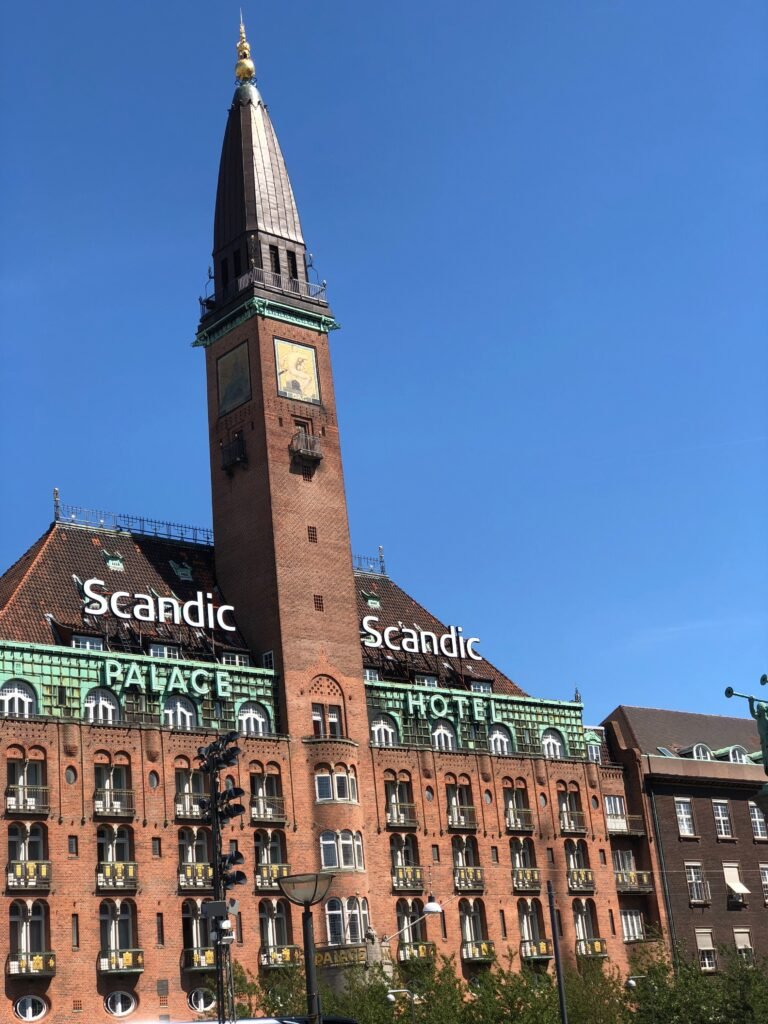
Copenhagen City Hall
It was time to hit one of the tallest buildings in Copenhagen, which offers a terrific view over the city. This building is the headquarters of the municipal council as well as the Lord Mayor. It offers beautiful murals and architecture for free to curious passerby’s.
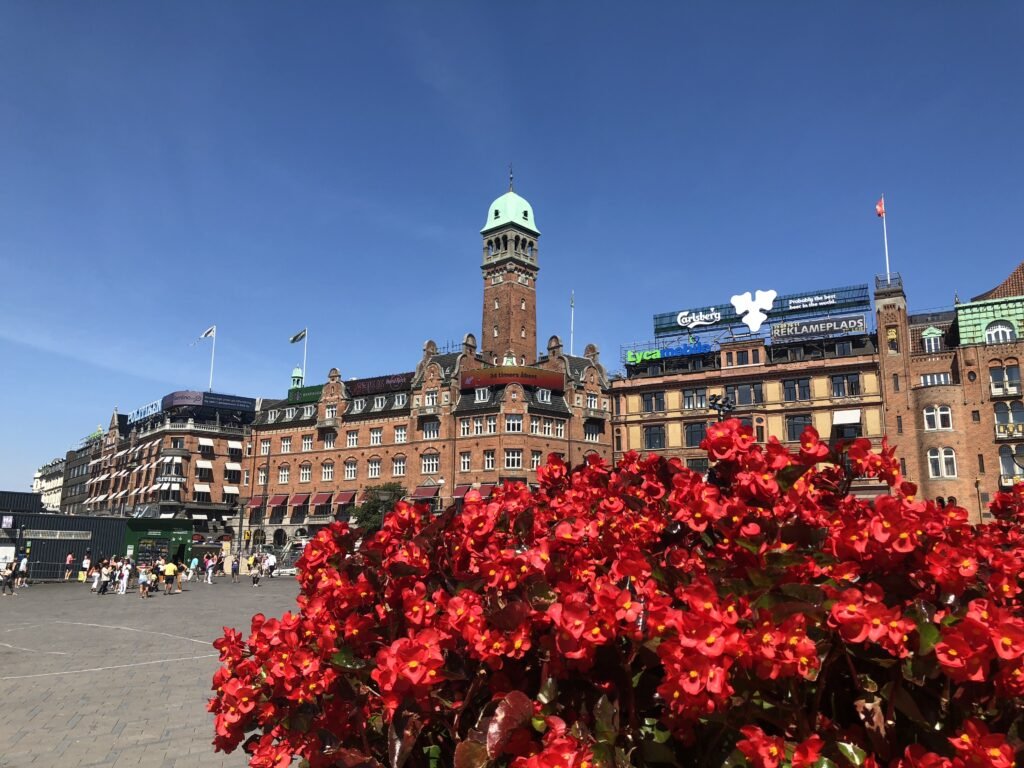
Across from City Hall, in one of the main city squares called Radhuspladsen.
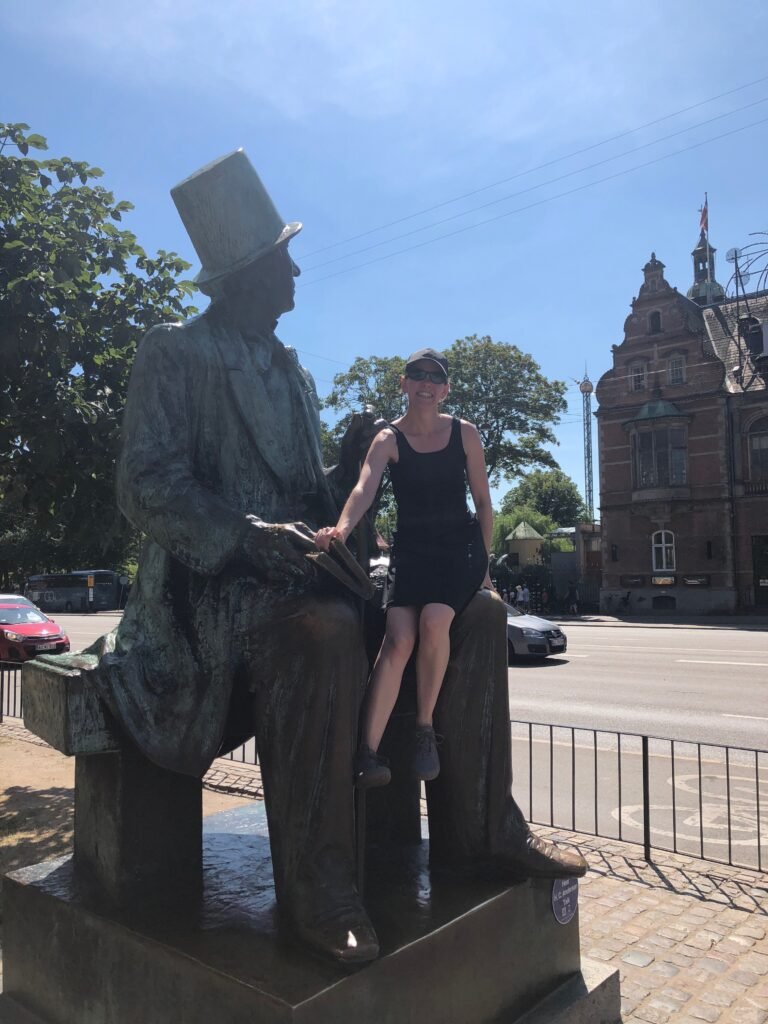
The Hans Christian Andersen Statue
And of course, the trip to Copenhagen wouldn’t be complete without crawling onto the lap of that guy that got around the city whose hat startlingly resembles Abe Lincoln. The great writer wrote wonderful and timeless childhood stories including “The Ugly Duckling,” “The Little Mermaid,” “Thumbelina,” and “The Emperor’s New Clothes.”
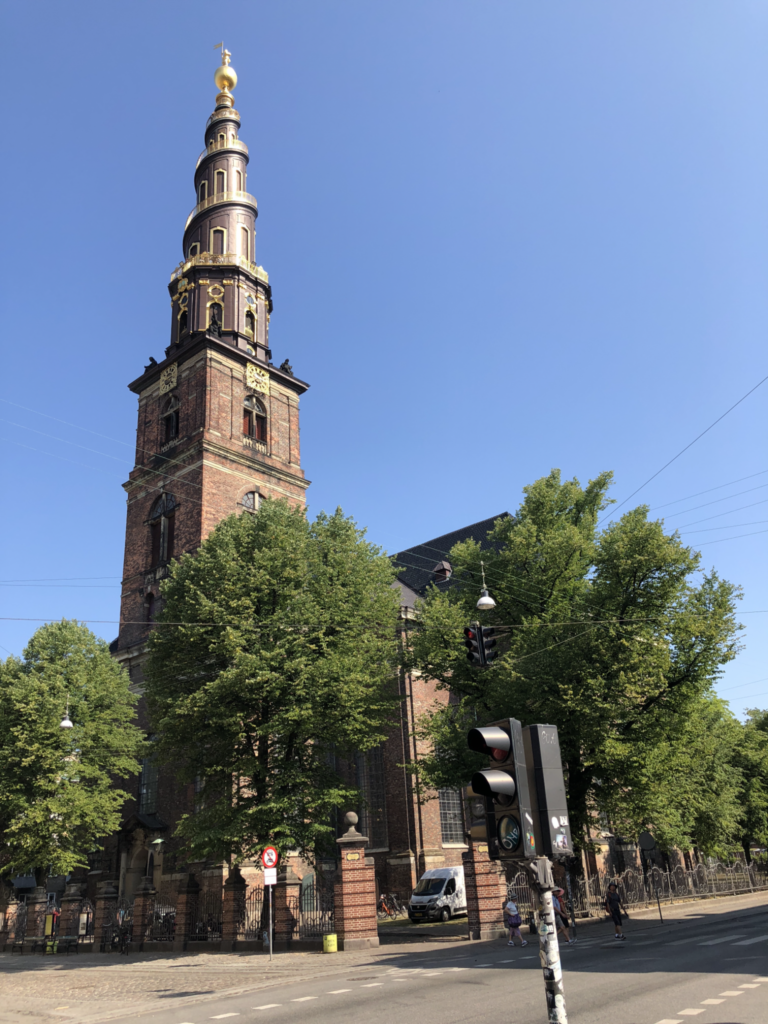
Church of our Saviour
Crossing the bridge into the Christianshavn, also known as the “hipster” neighborhood of Copenhagen, we wander to this baroque 17th-century gem. It features a climbable tower on the OUTSIDE of its spire, the only one of its kind we’ve ever experienced. And we’ve popped our way up a LOT of church towers. It’s kind of a thing in Europe if you hadn’t noticed. Haha.
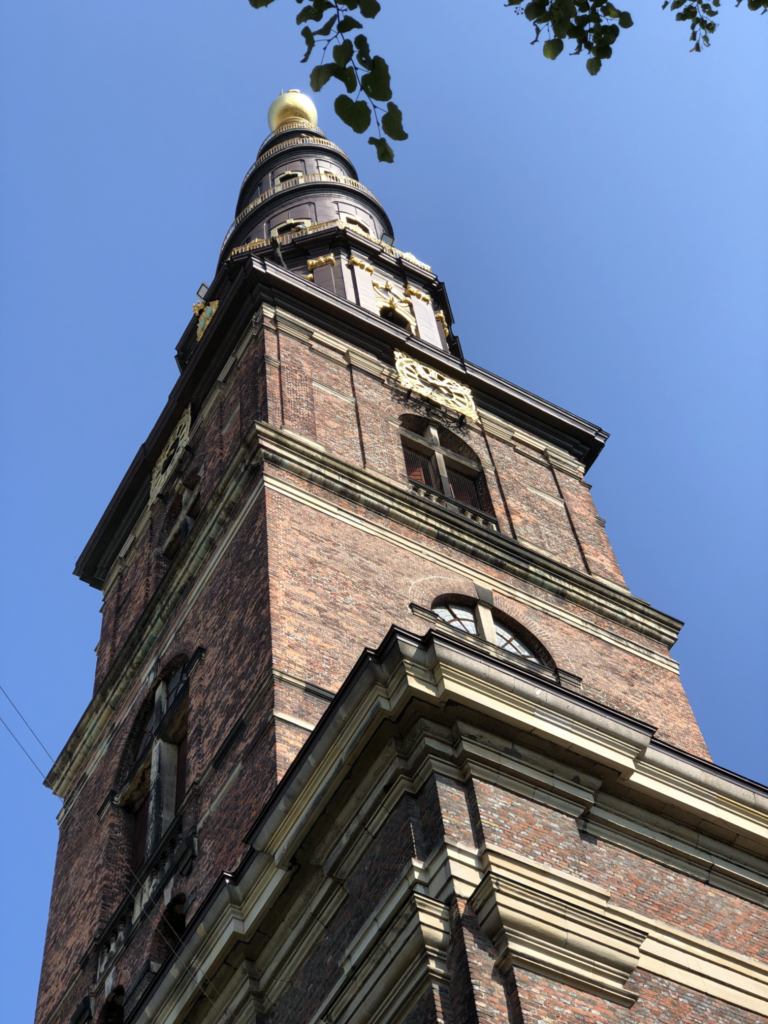
Well, it better be unique for the 100 DKK ($16.50) they charged us to climb it! We read three years later, this is now 120 DKK. (2021)
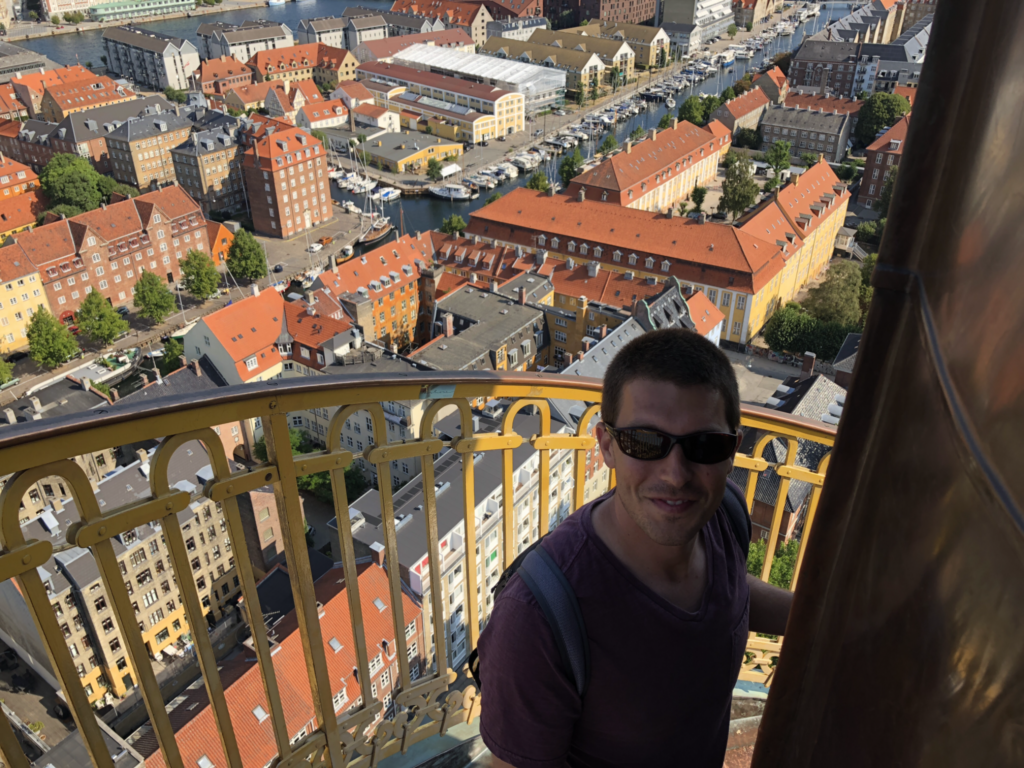
It was well-worth it, albeit a little dizzying and a bit fear-inducing for the one of us who isn’t crazy about heights. It’s also a tight squeeze should you have to pass anyone coming down along the way.
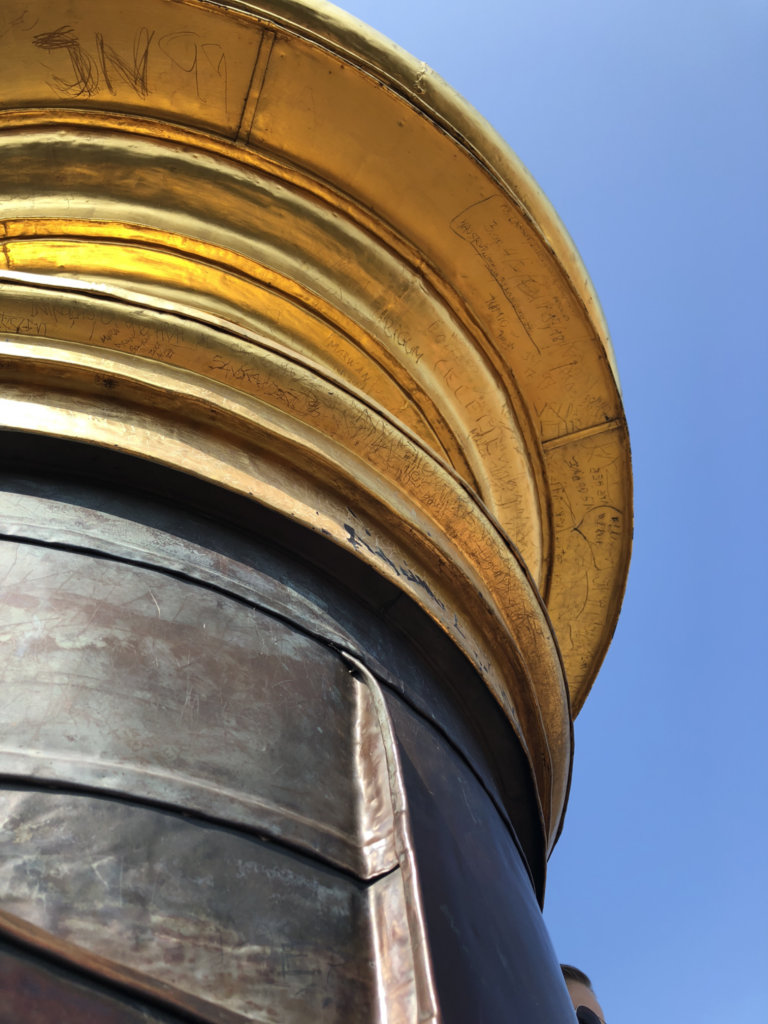
It was pretty exhilarating to be up right next to the top of the steeple like this. Naturally, it was covered in graffiti. Because why wouldn’t you deface it with your sucky initials and hearts that no one cares about.

And the view from the top was simply breathtaking.
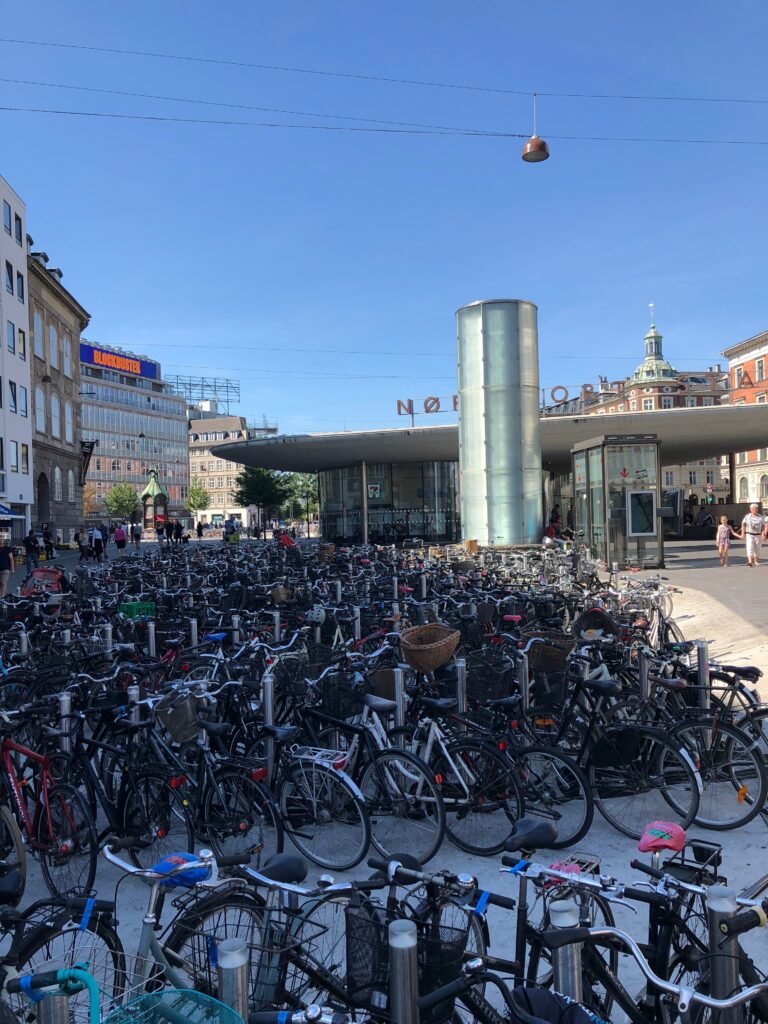
I want to ride my Bicycle!
Copenhagen is one of the greenest cities in the world, which was clear by the sheer number of bicycles. We’d never seen this many bikes in our lives. It puts our former bicycle nirvana of Portland, Oregon to shame. In fact, it’s the most bike-friendly city on earth. One of the main reasons for the popularity of cycling in Denmark is the network of paths, including innovative bridges, which form incredibly safe cycling super highways across the city. More than half the population rides their bikes to work and with this web, as well as the public transportation, it’s clear that it would be a complete waste of money to own a car in this city. Probably why there are 675,000 bikes and 120,000 cars in the capital of Denmark. Our kind of place…
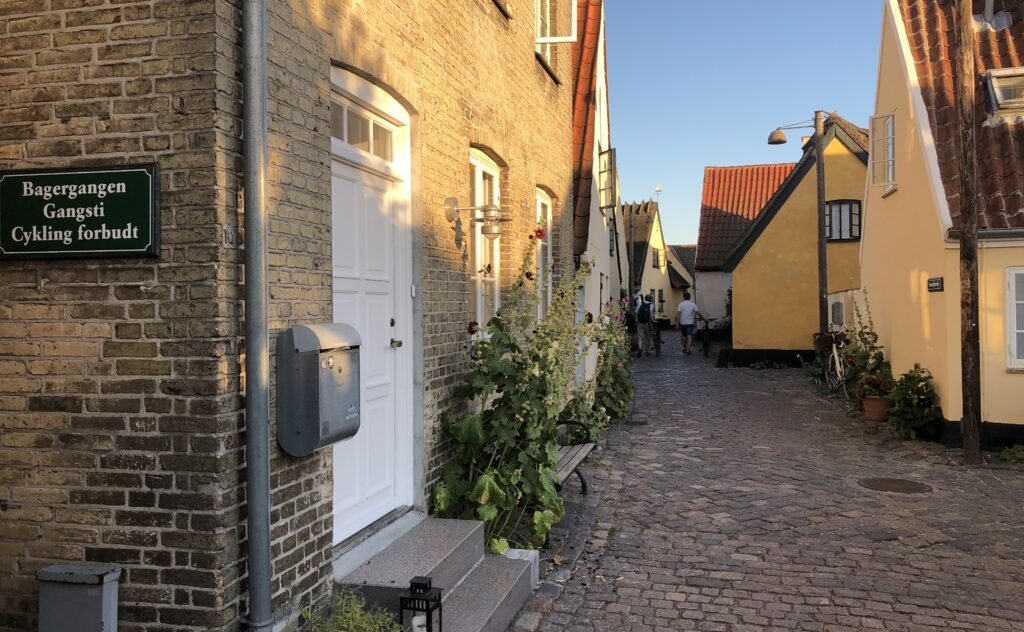
Dragør
Dragør, which is pronounced Drah-were, is postcard perfect fishing town about 30-40 minutes by bus outside of Copenhagen. We met a local on the bus who was incredibly surprised we were staying out there, but gave us immense kudos for our smart choice.
We chose to stay there for several reasons. Most obviously, its cobble-stoned streets and little buttery houses are absolutely adorable. Secondly, it was a blissful escape from the chaotic bustling of tourist madness in July.


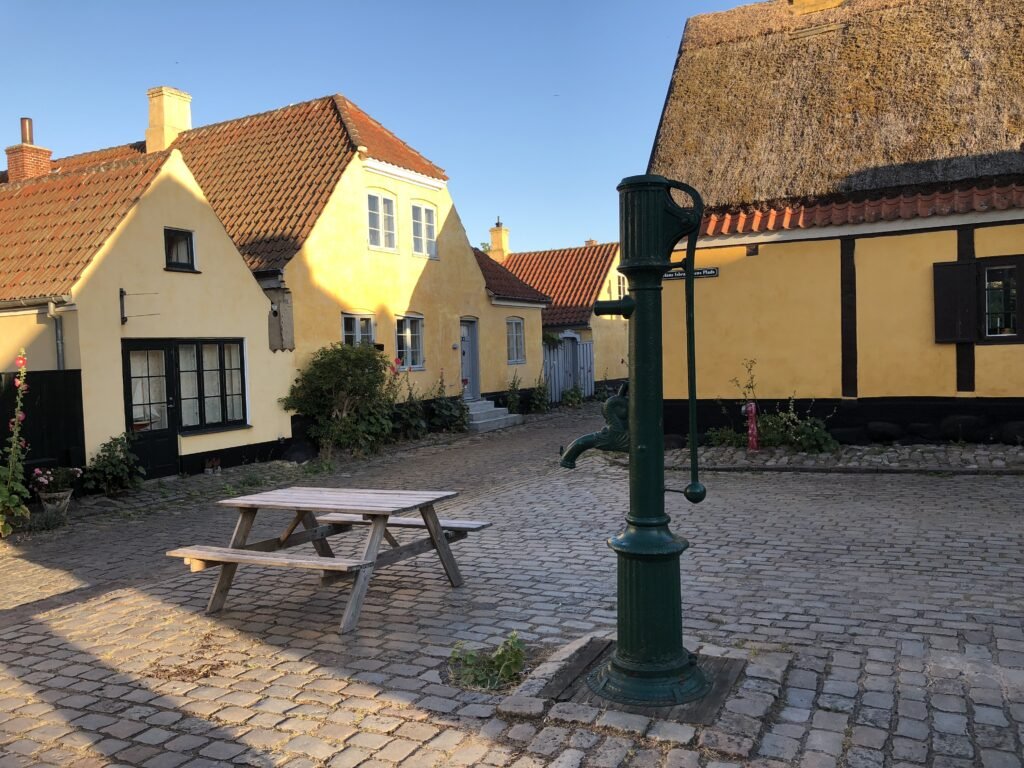
Thirdly, it was significantly cheaper. Our private AirBnb was $43/night as opposed to double or trip that in the city. Finally, it was right on the water and even offered views of the Øresund Bridge as it spans across to Malmo in Sweden, which is the way we’d come in on.

We arrived just in time to explore the lovely evening light.
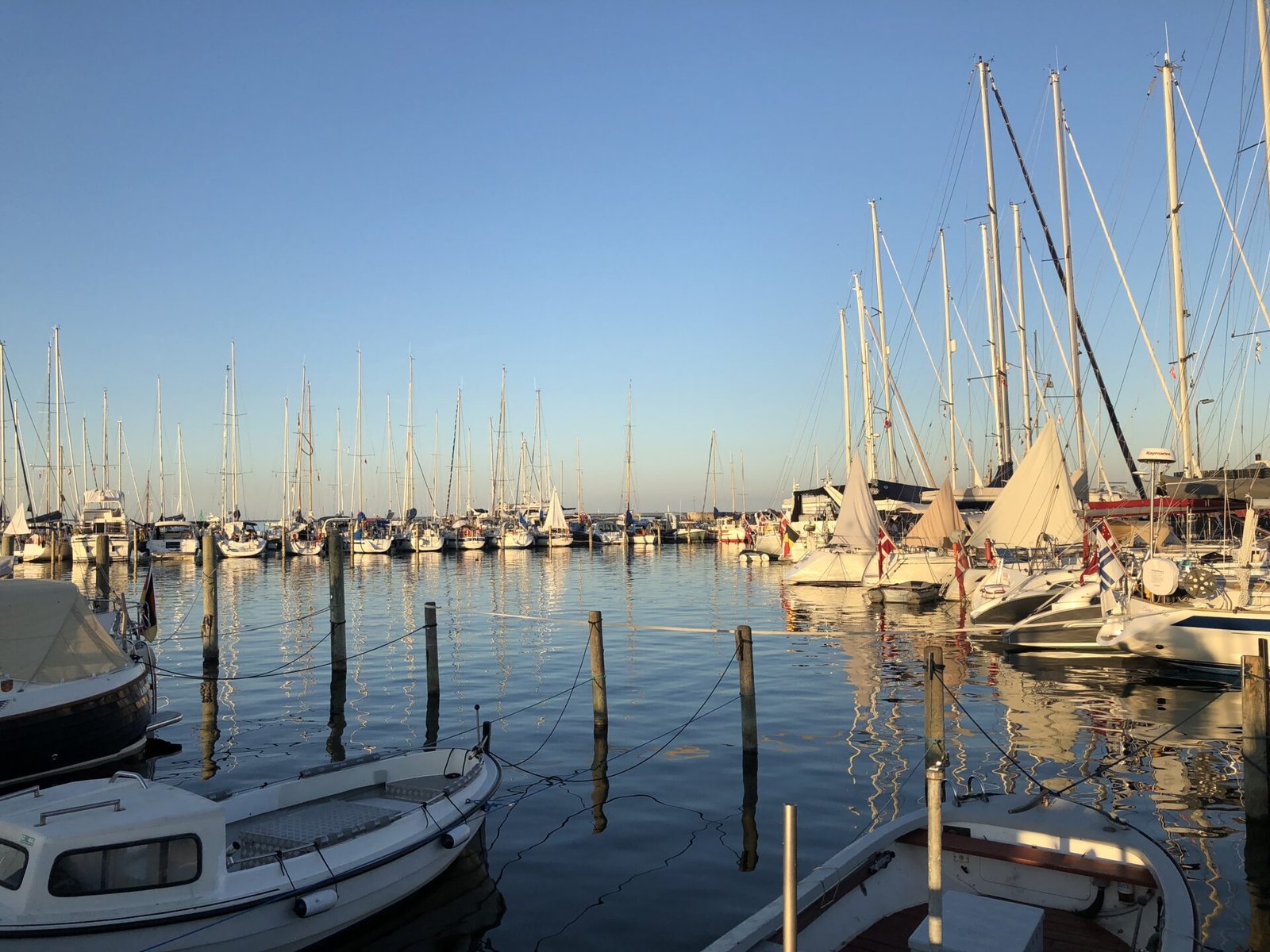
The port is always busy with sailing ships, small fishing boats, and yachts and the town’s economy is largely dependent on fishing.
What a wonderful, wonderful city!!



